I and other authors talk about EDC procedures, tips and gear plenty here on Survival Sullivan. Keeping with the idea that you are your own first responder, smartly chosen EDC gear forms your first line of equipment to help you beat back disaster or deal with an emergency.
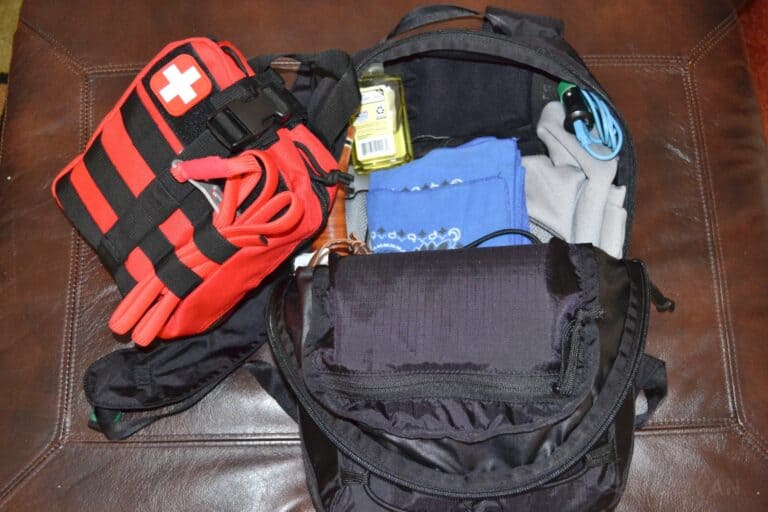
Sure, there are plenty of EDC-obsessed types who have a frankly unhealthy obsession with tiny prybar-bottle openers made from exotic alloys, but that is not what we advocate here.
No, we look at intelligent EDC more akin to something in line with the motto of the Boy Scouts: be prepared. In the interest of fomenting discussion on the topic as well as giving you some ideas for what’s possible with your own EDC setup, I’ll be sharing my (very literal) daily carry gear with the readership.
This article will showcase the items I am currently using, why I carry them and the things I like and dislike about them. I hope you will all enjoy it, but more importantly learn something, even if it is only what to question about your own gear.
My EDC Values
Too much of too many discussions germane to the topic of self-sufficiency revolve around hardware, gear, stuff. Often they happen on paper only.
When I say “on paper” I mean in a purely academic mode of comparison. What is missing is context, and context, along with experience, are two of the most valuable factors of all when trying to determine what is best for a given set of circumstances.
For instance, a veteran protection agent or police officer who has come to value highly, and rightly, carrying plenty of spare ammunition for their pistol will often place disproportional value on the carry of extra ammo.
Were my occasional carry of a 5-shot snub revolver and a single reload come up in a conversation with them, they would feel justified in taking me to task based on their experience and threats. To them, a serious gunfight is more than a remote possibility.
I would not feel inclined to listen to their recommendations because my reasons for carrying that gun are different than theirs; the threats are different. More on that later.
Now, I am not saying “It works for me!” which is a refrain my long time readers know I detest because it is an intellectual belly-flop.
IWFM simply means, “I have not incurred a penalty thus far for my selection, and so any evidence contrary to my selection is invalid.” It is usually an emotional redoubt, not a reasonable one.
I am always keen to learn more, know more, get better and make better decisions. If someone can show me that something I am doing is dangerously defective or grossly inferior for my purposes, I am all ears.
That’s the trick: knowing when you have made the best possible choice, even if it is a compromise, versus “sticking to your guns” for reasons of mere preference or emotional investment. Not always easy to do. You need to keep an open mind, but not so open your brain falls out.
Your values, needs and requirements may look very different from mine. Your EDC selections probably only resemble mine in part, and that’s fine. You should not run out and duplicate my gear selections without some careful analysis and introspection.
Another thing: my gear must fit within my “attire envelope,” meaning I am not willing to give up my normal mode of dress for work in order to carry this, that or something else.
Now, I usually wear a blazer or suit jacket as a matter of course, so this does have some advantage, namely a few more pockets and a slightly generous cut for the concealment of items on my waistline.
That being said, you will not catch me toting a “man-bag,” backpack, or anything else out in public unless the situation calls for it.
My normal day-to-day activity would make that somewhat suspicious and would be a social faux pas, and I am willing to risk neither. My EDC pack stays in the car unless I have it on me.
My EDC Selections
My daily carry gear is broken down into two discrete units. The first are things I carry on my body, all the time. The second is in a small, unobtrusive backpack that goes with me whenever I leave the house. It rides in my vehicle in the passenger compartment.
I am hesitant to call this a Go-Bag, though this is what it most closely resembles in purpose, because it is a seriously stripped-down selection of things that are just good to have should I run afoul of something unexpected while I am out and about.
It is not even really designed to get me back home should something major occur while I am far afield.
But together both give me a good buffer against all kinds of mishaps, at least ones that one man could reasonably be expected to deal with on his own. In matters of self-defense, medical, shelter, navigation, lighting and signaling, I will be all set for the short term.
Charles’ On-Body EDC Gear
Knives
I always carry two knives, not because I am a knife nut, but because my methodology really requires two. The first is a Swiss Army knife of conventional pattern, one with an array of blades, bits and other useful tools, including a saw.
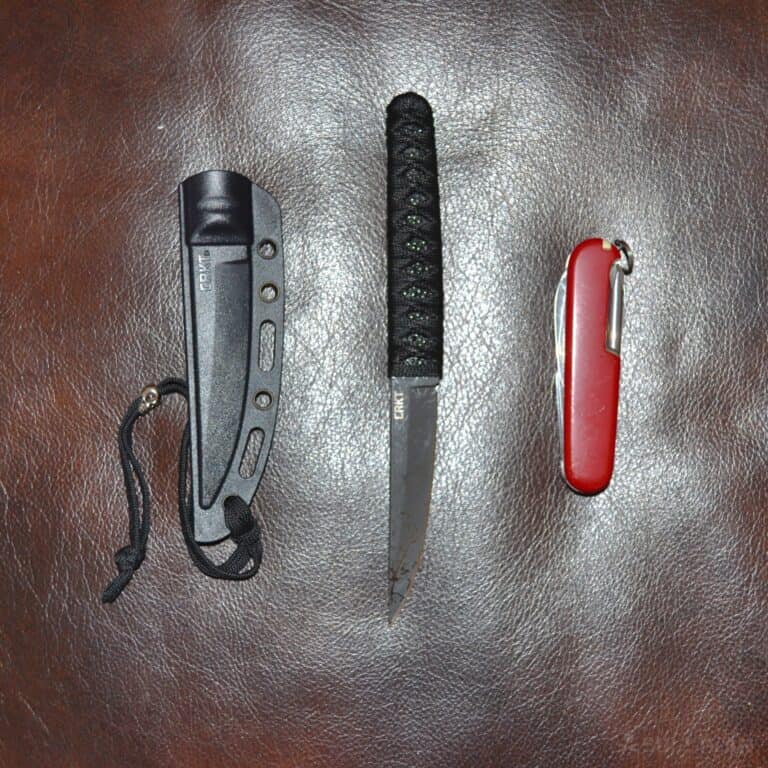
This is my utility or chore blade, one that opens boxes, slices into annoying clamshell packaging, whittles, trims and adjusts all manner of mundane, everyday things.
The other is a small, thin fixed blade knife that rides IWB opposite my pistol, a CRKT Obake.
This knife is used only for emergencies, be it puncturing some dirtbag accosting me, slicing off a frozen seatbelt after a car crash, or any other task where a scary sharp blade is needed to make quick and safe work of it. I never use the edge for anything aside from an emergency, and it is kept perpetually razor sharp.
The medium-sized Swiss Army knives (Tinker, Camper, etc.) are favorites in their size, and I prefer them to larger, bulkier multi-pliers which always seem to tear up the pockets of my slacks. I don’t miss the pliers that much (you’ll see why) and the smooth, flat capsule shape of the SAK is both low-profile and pocket friendly.
The Obake is of entirely conventional configuration, being more or less a traditionally styled Japanese style tanto, but fairly unique in its mode of carry; a free-floating sheath that tethers to my belt by way of a short attached cord, the sheath being simply held against the body by pressure from the belt.
Once drawn, the sheath clears the belt line by a short distance before reaching the end of the tether, and then it pops off the blade, completing the draw.
This was a bit of a switch for me since I usually carried a “tactical” folding knife in a front pocket for the same reasons, but I have come to like this little knife.
Both for its thin profile and excellent cutting capability, but also for its sheath, which lends itself to easy repositioning when in a vehicle or seated without having to obnoxiously remove and reattach the sheath from the belt.
This is an option that is for everyone, but is a very good and inexpensive option for those who desire a small fixed blade.
Both of my knife options are small, light and thin, by design. The knife is only a weapon of desperation for me. If you carry one knife to do everything, you must be committed to keeping it sharp enough for real work.
A duo, one for work and one for serious social purposes, will save you much hassle if you are not committed to knife maintenance. My two cents.
Pistols
I will carry one of two pistols at all times assuming that I can be legally armed. The first is a SIG P226 9mm, carried IWB strongside in a kydex holster:
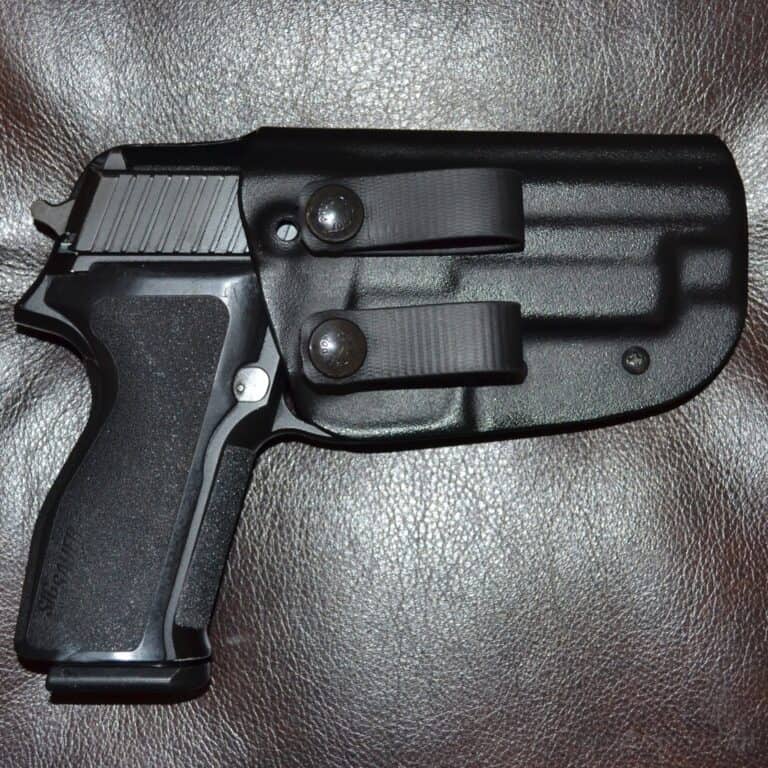
The second is a Ruger LCR .357 Magnum, usually carried AIWB, but I have on occasion carried it on my ankle when required:
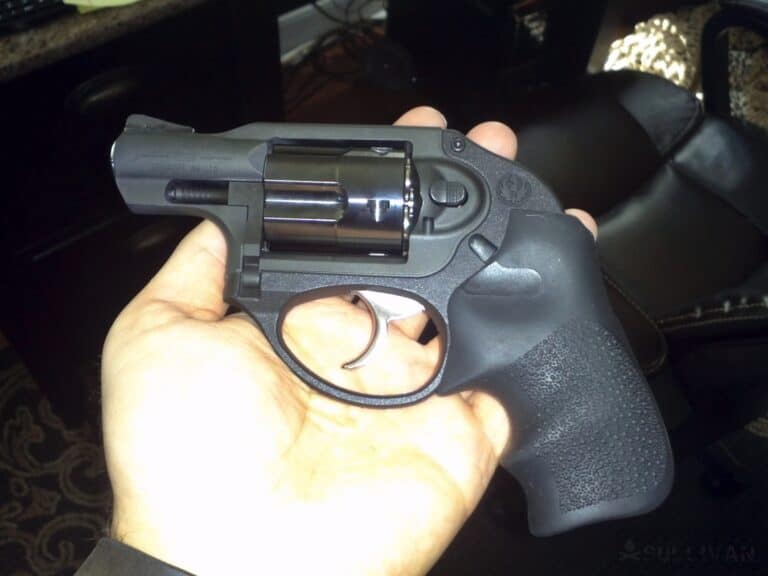
Both were chosen for their reliability and shootability, and both have plenty of performance in a defensive role.
The larger SIG is my go-to whenever I can conceal it easily, as its combination of capacity and superior handling makes sense much of the time. It is my “One Gun”, the pistol that I would choose in light of any and all other options.
I am a lifelong DA/SA shooter and shoot it to a very high level. I will typically carry a spare magazine for this gun on my person, either in a kydex carrier on my belt or clipped into a pocket on a NeoMag.
The P226 is something of a design from yesteryear now, but I have no incentive to change to another pistol for my primary at this time.
The little gun, the LCR, is for all the times when I cannot conceal the big SIG effectively, or when I need to throw on a gun for a quick milk-run. Yes, believe it or not I am a human and do not want to jock up with fullsize pistol and miscellaneous kit to run to the corner store less than mile up the road.
When it comes to small handguns, I lean more toward revolvers than semis. Among these little wheelguns, the LCR has an excellent trigger in its class, is accurate, and the .357 Magnum remains an excellent defensive cartridge, though that much power comes at a steep price in a revolver as light as the LCR.
Nonetheless, I practice with it regularly, and maintain high standards with it also.
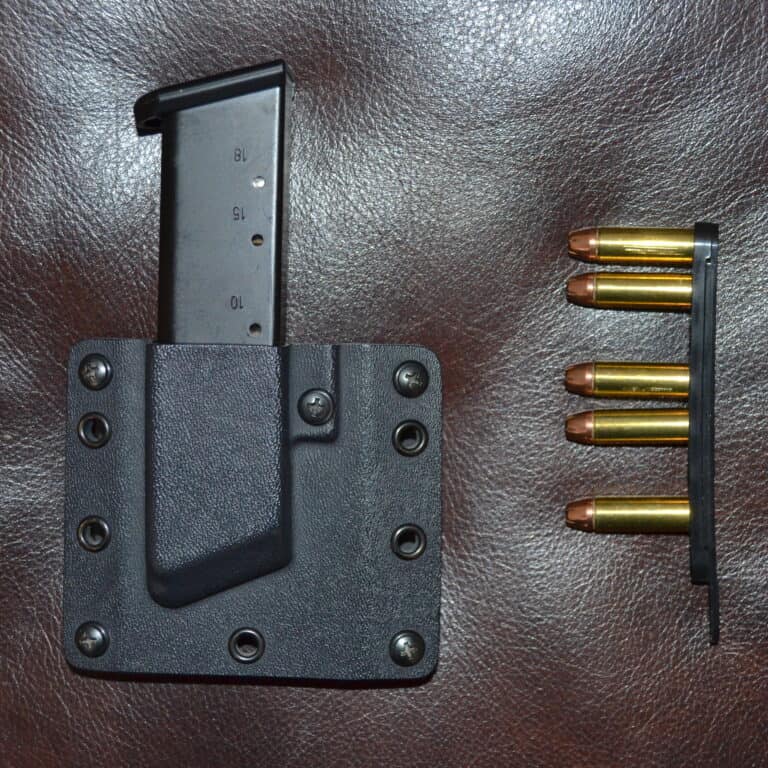
I can carry the LCR in the AIWB position, in a pocket holster or on my ankle depending on the task at hand.
I will also usually carry a single SpeedStrip of five rounds in my pocket for a reload, though I am under no illusions about the likelihood of me needing or being permitted to reload my 5-shot snubbie if the first five rounds fail to solve my problem.
Speedloaders are great, but their greater bulk makes them tough to carry concealed when I am already pressed by virtue of having to go down to the snubbie.
Bandana
I always carry a bandana in a pocket somewhere. Bandanas are among the most useful multipurpose tools that one could conceivably carry. My love of the humble bandana is well known. I can use this for sweat control, shade, as a small work mat, pouch, coarse filter, and more.
Bandanas could also be used in a pinch as an additional bandage on a wound, or when you chose a bright color as a fairly handy attention getting signal
I never leave home without a clean one. And no, I don’t blow my nose into them. 100% cotton or silk are my choices for durability. I could care less about pattern as these only come out for a reason, not as a fashion statement.
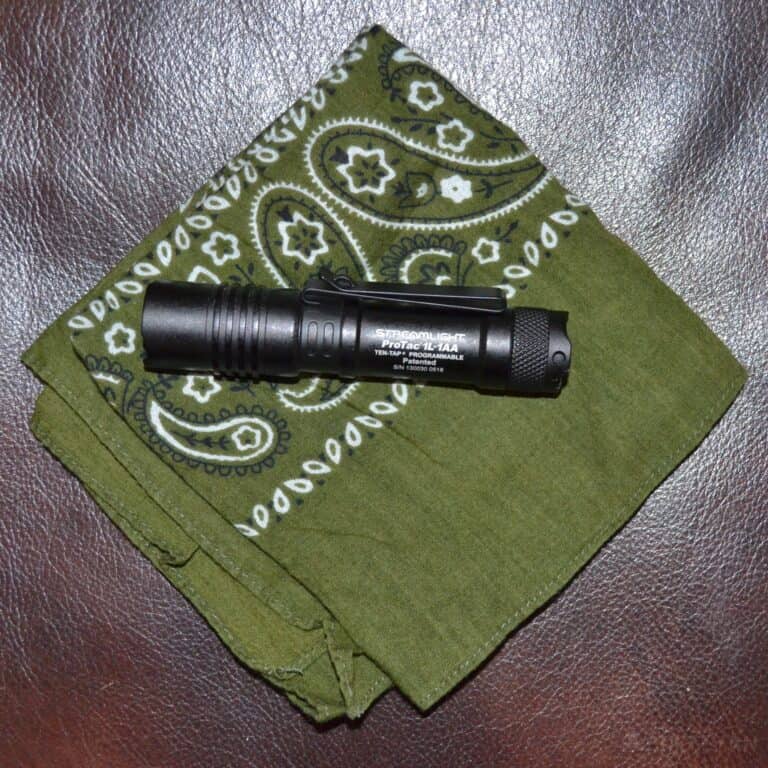
Flashlight
A flashlight is a non-negotiable part of my EDC. Honest to God I think I would rather forgo the gun before I would the light. A good flashlight will let you overcome all the risks, lurking dangers and simple annoyances that darkness has in store for you.
Disclosure: This post has links to 3rd party websites, so I may get a commission if you buy through those links. Survival Sullivan is a participant in the Amazon Services LLC Associates Program. As an Amazon Associate, I earn from qualifying purchases. See my full disclosure for more.
My preferred light is Streamlight’s ProTac 1L-1AA. It is a single cell light that can take a 123A lithium or AA battery. This eases the burden of finding high-quality (and expensive) lithium cells somewhat, even if I do take a hit on output going to AA.
Flashlights aren’t just for finding dropped keys and lost dogs in the dark. You can use light to your advantage in self-defense situations.
Just last year I had a questionable encounter in the parking lot of the grocery I was leaving late at night. As I finished loading my groceries into my vehicle I performed a quick scan before I moved to get in.
A lone individual with both hands in his pockets was moving from the darker part of the lot toward me with certainty, against the flow of pedestrian traffic and against the “grain” and multitude of parked cars. Wrong answer.
I pulled my light and lit him up, announcing loudly that I could not help him whatever he wanted. He halted for a few seconds before turning perpendicular to me and walking off toward the store, as if that was his intention the whole time.
I have little doubt this guy had bad intentions. My use of light and a verbal challenge was sufficient to get him thinking I was not the victim he was looking for, and he waived off with nary a word.
If the situation escalated, the light would have done two things for me; it would have impaired my erstwhile attacker’s vision, and allowed me to definitively determine what, if anything, he produced in his hands before I used more force in the form of pepper spray or my pistol. Before you ask, I had my SIG on for this foray.
Whatever light you decide on for general purpose carry must be bright, easily drawn from the pocket or belt and should have switching that facilitates easy use while gripped.
Phone
I don’t go anywhere without it. The modern smartphone simply has too much to offer to eschew it, at least while the lights are on and the networks are up. I can call for help, text, email, navigate and more with it, and it is indispensable for running my business.
Sure, we probably cannot expect internet and cell service to persevere in the case of something truly cataclysmic, but you can still get a surprising amount of use out of these things in many lesser disasters.
Texts especially will have a better chance of transmitting anytime networks are clogged either from sheer volume of traffic or from damage. I would not put all my chips on a smartphone as a survival tool, but I have trained accordingly on analog techniques for navigation and so forth just in case it doesn’t.
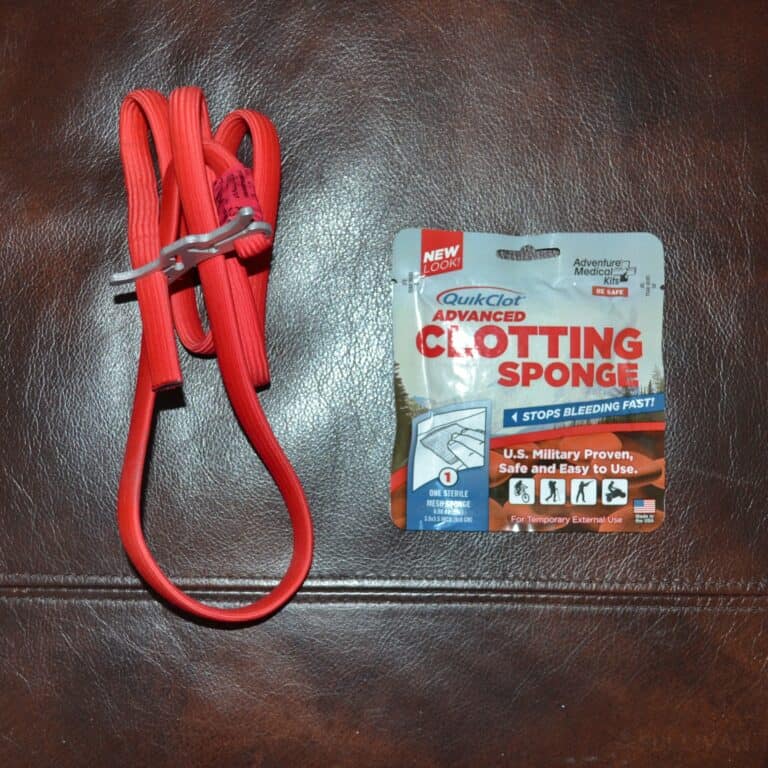
Tourniquet and Quik-Clot Gauze
I always make room for at least a minimal medical load. A TQ will prevent one of the leading causes of death via gunshot (self-inflicted accidentally or otherwise), and the clotting gauze will work with direct pressure to help staunch the flow from that and other injuries.
I have said it before and I’ll say it again: if you carry a gun habitually, and are not making room for a tourniquet at the very least, you are wrong. Aside from possibly saving your own life in the event of mishap or an attack, you are far, far more likely to employ medical gear to come to the aid of someone else.
I carry a RATS tourniquet since its flexible nature gives me the most options for discreet carry.
I know this is a controversial choice among casualty-care types, but I have been assured by associates who are long-serving professionals in the field with multiple military and civilian deployments in conflict zones that they are adequate for the task.
Charles’ Go-Bag EDC Gear
Pack
My EDC bag is a Grey Ghost Gear Hideout, which is a nifty, superlight backpack that rolls up into its own little stuff sack when not in use. This is not what you’d expect for most Go-Bags: it is made from super-light and thin nylon, with integrated straps made from the same.
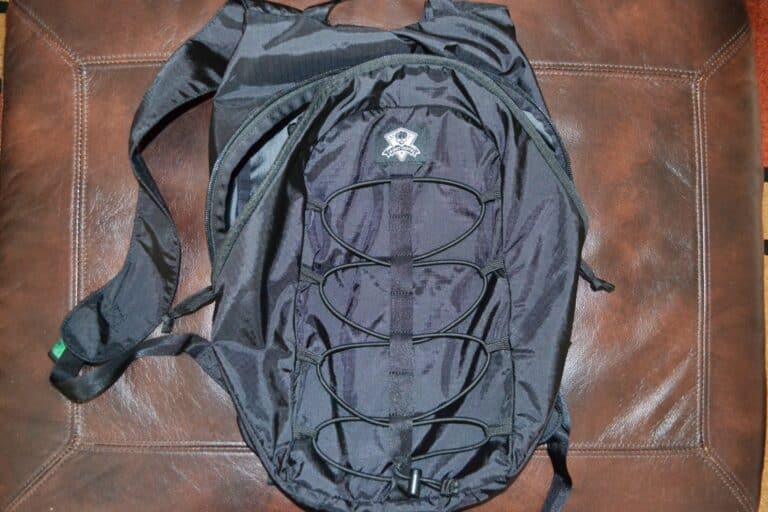
No external storage, no internal organization (save a tiny utility pouch), nothing special. Just a small, light bag that cannot carry much weight or volume. For me, it is perfect: this bag is highly non-descript and small. It does not draw much attention or scream tactical edc gear, and carries only what I need and nothing else.
I have loaded this bag with more than I should in testing and it has held up fine, despite its flimsy appearance. GGG does not make crap, and this bag is no different.
I only have about 12 lbs of goodies inside, and if I had to ditch my vehicle and walk it will do the job fine, no fancy pads, suspension or frame needed. Again, this is nothing more than a low-profile way for me to keep wanted gear close at hand and in a convenient bundle should I need to access it.
Trauma Kit
In my handy pack I carry a larger, full-featured medical kit sufficient to deal with multiple injuries or more substantial trauma.
Within it I have gauze pads, gauze rolls, even more tourniquets, antiseptic prep pads, medical tape, ace wraps, chest seals, decompression needle, NPA, gloves and more. All of this stuff takes up a bit of room and fits in a proper, multi-tiered pouch, not a pocket kit, so it stays in the bag.
You’ll note the pouch here is bright red with the international symbol for first-aid on it. I don’t want there to be any doubts as to what this is for.
Multi-Cam or coyote brown may still be all the rage for tacti-cool guys and gals, but for me running around stateside I want there to be no doubt as to what the pouch contains in a high-stress situation.
Remember: it might be a good Samaritan or friend who needs to use the contents on me, or themselves.
In keeping with the flexible nature of most of my kit, this pouch is mounted on a tear-away Velcro panel that I can mount around the headrest of my vehicle, and I will often do so when on long voyages on the interstate.
My reasoning is in the event of a major crash my bag could go flying about the cabin or even be ejected. Securely affixed to the back of the headrest it will remain in place.
I had cause to use this one day on the range when I caught a substantial piece of shrapnel off of a steel target. I was pretty sure at the outset that it was not an intact bullet, but the hole in my flank was leaking pretty good.
I popped a clotting sponge on it, wrapped it, and away we went to the hospital, luckily no worse for wear after the offending chunk of lead and copper was removed.
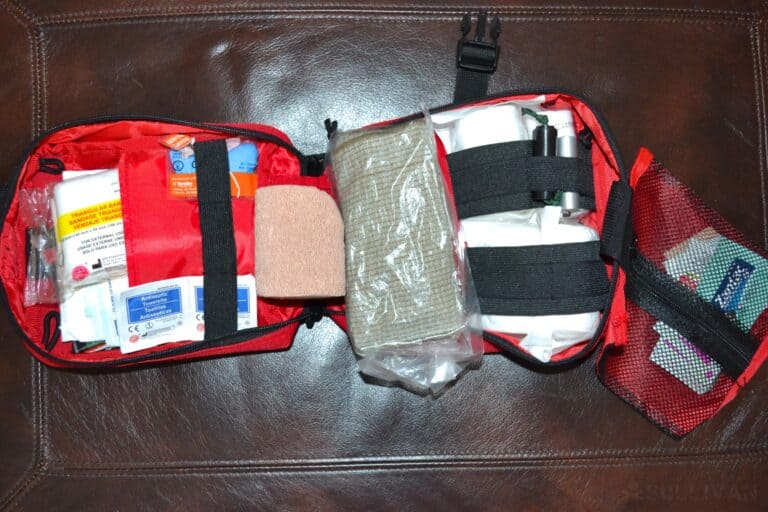
First-Aid Kit
Not every injury needs serious medical intervention, but it might still need attention.
For minor nicks, cuts, scrape and other dings and dents, I keep a smaller self-contained kit with band-aids, butterfly-strips, superglue, moleskin, a few packets of bite and burn cream, antibiotic ointment and a variety of meds, everything from pain relievers to nausea and motion sickness aids.
For tools, I keep a small roll of medical tape and a set of tweezers along with a single edge razor blade.
When working in remote places, or dirty places, or in dirty conditions, I don’t want to take the chance of minor cuts getting infected needlessly. In more serious circumstances, there might not be any higher level care, so keeping your wounds germ-free is doubly important.
You might be a tough guy until an infection swells your finger up to three times its normal size and the contagion starts creeping up your arm.
Not for nothing, many kids are unduly upset by minor injuries, and in a crisis little care items like this go a long way toward calming them, and their parents, down.
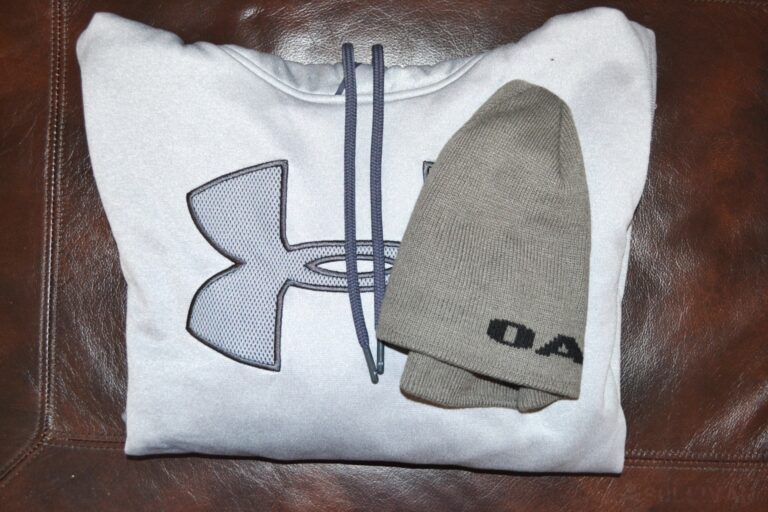
Hoodie / Rain Jacket
I keep an outer garment stowed in this pack to help me deal with inclement weather. In the winter and autumn, it is a good Under Armour hoodie. In the spring and summertime, it is a packable rain jacket.
You never know when the weather might turn, and being caught outside unprepared is a recipe for disaster; exposure is a huge killer, and even if conditions are not so bad to kill you they can still make you miserable and your job a lot harder.
I have needed both for dealing with my own snafus like flat tires and helping other people caught in a jam.
Hat
For the same reasons I carry the above hoodie and jacket, I carry a hat. Something warm like a toque (or toboggan, beanie, watchcap or whatever you call it) in the winter, and a rolled-up full-brimmed hat in the summer.
This is not a style item for me: if I need to be outside for extended periods, I need some protection on my noggin, especially being bald.
Heat loss is significant from the head in colder temps, and the sun will mercilessly broil unprotected fair skin like mine, so I take pains to prevent that. Plus, things are harder to see when the sun is in your eyes.
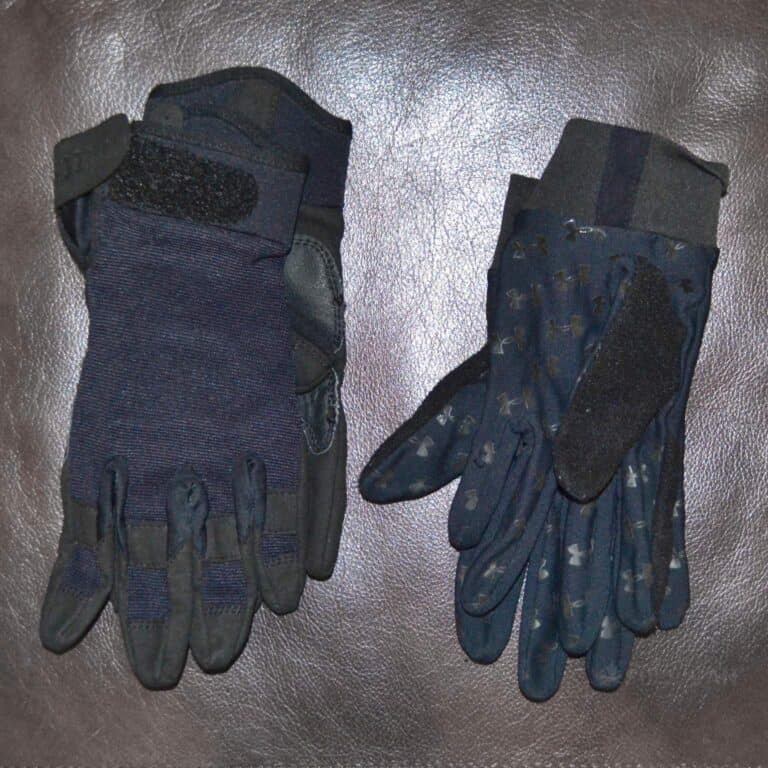
Gloves
You already know where I am going with this. Protect the things that protect you. There are innumerable ways to injure your hands in an emergency. Broken glass, jagged metal, exposed nails, hot surfaces, biting insects, and other things all want a piece of your tender flesh.
I am not willing to needlessly damage my hands so I keep gloves in my pack that I can don quickly when ready to get into some nasty work.
I am currently using a pair of the fast-fit Mechanix gloves, and I like them. They are thin and while not the toughest gloves they afford me plenty of dexterity for using tools (natch) and running guns. It is a fair tradeoff for me. In the winter I keep these bundled with a super-thin pair of warm glove liners.
I have used all kinds of gloves for all kinds of tasks, and I keep coming back to ones of this nature as the best combination of traits for me.
If I were to go up to a true work glove for protection, I’d look at leather ranch gloves or something like the classic woven White Ox logging gloves. Either will really go a long way to keeping your hands from getting chewed up.
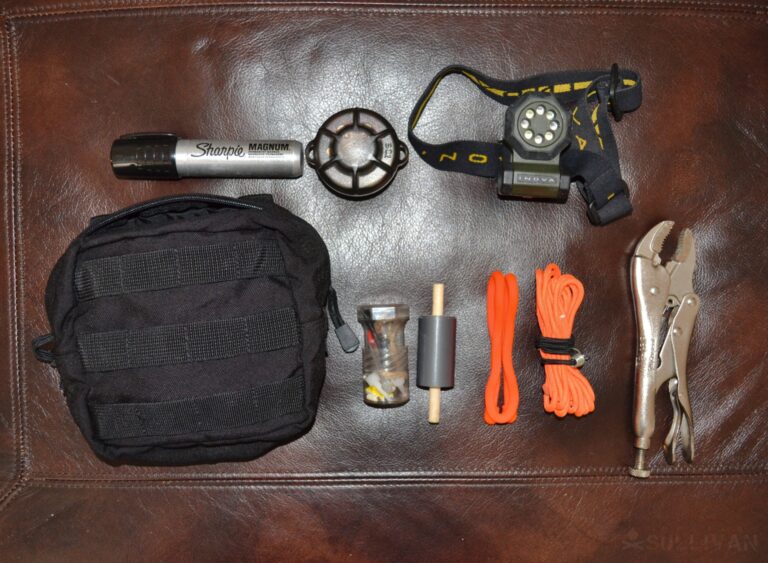
Tiny Tool Kit
You never know what you’ll need to deal with out in the world, so it pays to prepare for contingencies as best you can.
In a small pouch I keep a set of vise grips with wire cutters (told you I had little use for a multi-plier), some superglue, a small prybar, knife sharpener, some flint, a Bic lighter, a small hank of paracord, about 15 feet of duct tape wound around a dowel rod and a carabiner.
Between these, my Swiss Army knife and the next tool on this list, I can handle most gear repair contingencies I should come across, and I keep a proper vehicle repair kit in the back of my Jeep at any rate. The above tools are mostly to help me keep my things in good repair and deal with other incidental issues.
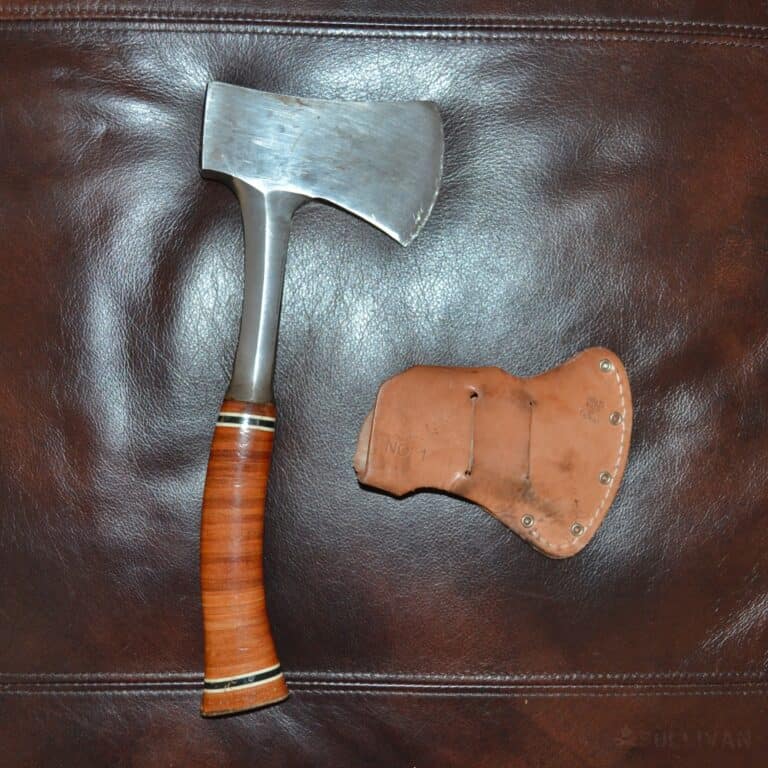
Hatchet
I suppose this is more properly called a tomahawk, but since mine is a single piece of forged steel, I am not sure where it fits on the taxonomy of choppers.
At any rate, this is another multipurpose tool for me. I can use this little badass for its intended purpose, chopping wood, or chopping my way into a vehicle, structure or a container.
The poll is a flattened hammer head, so that increases my capability. I might need to pound nails or stakes, so it is good to have that capability all in one. If push really came to shove, this makes a good weapon for in-your-face mayhem.
It is only a little longer than a foot, but is a good chopper so long as I am not felling anything larger than a modest sapling. I mercifully have never had need to employ it against flesh, so I cannot report to its efficacy, but I have little doubt it would do a fine job.
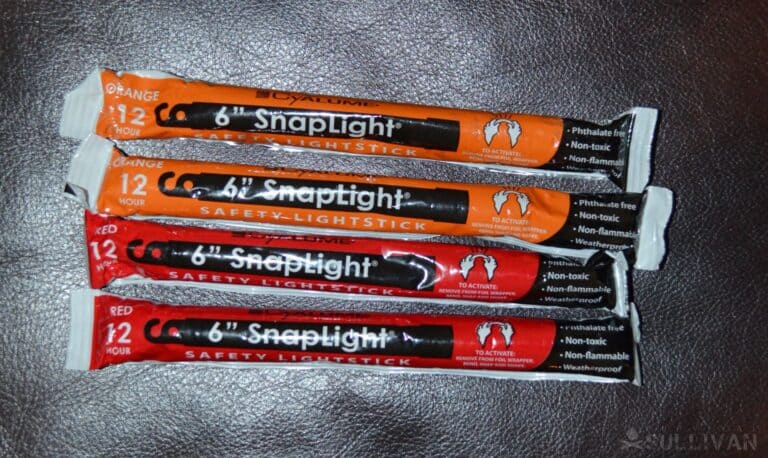
Chemlights
If all other light sources fail, or I need to mark my person or my vehicle for safety, I rely on these handy dudes. A quick snap and shake is all it takes, and I have pretty good soft area lighting for at least four hours, and they are visible in excess of eight hours for sure, and closer to 12 most times. Zero heat means no chance of fire.
While not as visible as proper road flares, they do a pretty good job in that respect, and so I have chosen these in safety orange and red as those are colors that most drivers are conditioned to look for.
Another great tip: you can attach these to a piece of string or other cordage and whirl them around your head when activated to make spotting you from the air a cinch. These glow brighter and burn out quicker when hot, and dimmer but longer when cold. Keep that in mind if you want to keep these in your car.
I keep a bundle of four in my pack. I don’t trust any but the Cyalume brand.
Gun Kit
Because you never know. In this pouch I keep a couple of spare 226 magazines with carrier, and some spare ammo for my LCR, speedloaders and strips.
My idea is that on the off chance things really go mental while I am out and about I can plus-up my ammunition on person out of the bag. I am realistic about my ammo consumption for self-defense, but as I have said many times more ammo is never, ever, ever a bad thing.
I also keep a tiny oil bottle and a boresnake in there just in case my pistol gets drenched or otherwise treated horribly and needs a quick sprucing up while I am out and about.
USB Charger
Exactly what it says. I keep an extra long USB cord with a variety of adapters in my pack. Of note, I also keep a “cord condom” on the cable in case I need to charge my devices from a USB port somewhere.
This nifty device blocks all but the contacts that supply power to the docked device, preventing and malicious tampering or removal of data. You can never be too cautious on that front.
Conclusion
That is my EDC, from front to back. I hope you enjoyed this peek in to my own procedures, and more importantly thought of a few things that you can apply to your own setup.
Everything I carry serves a purpose, so should everything you carry. If it does not serve a purpose, or it is only an item useful in the remotest of circumstances, question why you carry it. Be realistic.
With some careful thought and planning, you can tune up your EDC into a lean disaster readiness kit with no one the wiser.
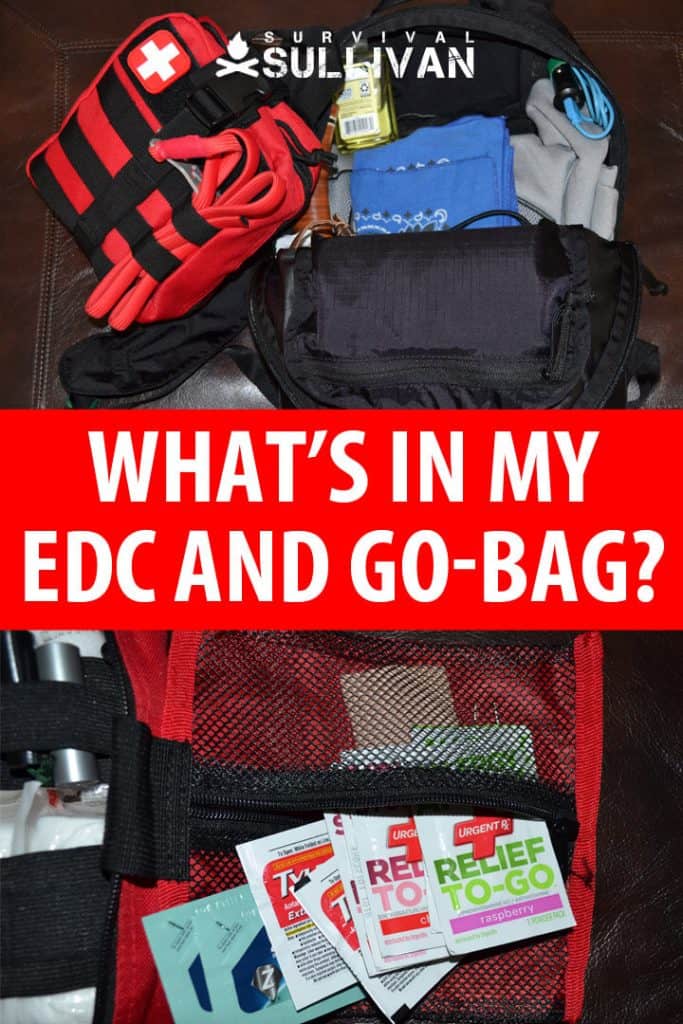
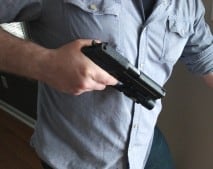
Charles Yor is an advocate of low-profile preparation, readiness as a virtue and avoiding trouble before it starts. He has enjoyed a long career in personal security implementation throughout the lower 48 of the United States.
